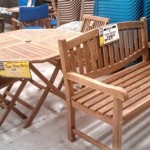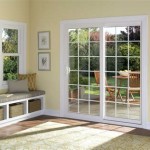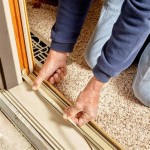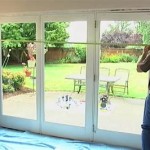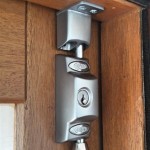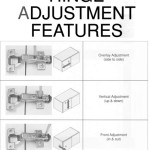Also, avoid bullet points or numbered list.
Patio Furniture Sets With Covers: A Comprehensive Guide
Investing in patio furniture enhances outdoor living spaces, transforming them into areas for relaxation, entertainment, and socializing. However, leaving patio furniture exposed to the elements without protection can lead to premature wear and tear, diminishing its aesthetic appeal and shortening its lifespan. The implementation of patio furniture covers provides a practical and cost-effective solution to mitigate these risks. This article explores the various aspects of patio furniture sets with covers, delving into the benefits, materials, selection criteria, maintenance, and different types available.
Patio furniture is generally designed to withstand outdoor conditions. Yet, prolonged exposure to factors such as sunlight, rain, snow, wind, and extreme temperature fluctuations can progressively damage the materials. Ultraviolet (UV) radiation from the sun can cause fading, cracking, and discoloration in fabrics, plastics, and even some metals. Moisture, in the form of rain or snow, can lead to rust in metal frames, mildew growth on cushions, and wood rotting. Wind can scatter debris and cause abrasions, while temperature variations can stress materials, leading to warping and cracking. Using appropriate covers shields the furniture from these damaging elements, preserving its integrity and appearance.
Key Benefits of Using Patio Furniture Covers
Patio furniture covers offer a multitude of advantages, making them a worthwhile investment for homeowners who value their outdoor spaces. Protecting furniture with covers extends its lifespan, reduces maintenance efforts, and maintains its aesthetic quality.
One of the primary benefits is the preservation of the furniture's condition. By shielding the furniture from the elements, covers prevent fading, cracking, and rust. This protection contributes significantly to prolonging the furniture's usable life. Covers also mitigate the need for frequent cleaning and repairs. Without covers, patio furniture can quickly accumulate dirt, dust, pollen, bird droppings, and other debris. Cleaning these substances from intricate designs or delicate fabrics can be time-consuming and potentially damaging. Covers create a barrier, minimizing the accumulation of dirt and simplifying routine maintenance.
Furthermore, the use of covers contributes to the overall aesthetic appeal of the outdoor space. Well-maintained furniture enhances the ambiance of the patio or deck, creating a more inviting and comfortable environment. Covers available in various colors and styles can also complement the existing décor, adding a touch of elegance and sophistication. Protecting furniture can also protect your investment. High-quality patio furniture represents a significant financial investment. By using covers, homeowners safeguard this investment, avoiding the cost of premature replacement due to weather-related damage.
Materials Used for Patio Furniture Covers
The effectiveness of a patio furniture cover is directly related to the quality and characteristics of the materials used in its construction. Different materials offer varying degrees of protection against the elements, and understanding their properties is crucial for selecting the appropriate covers.
Polyester is a commonly used material for patio furniture covers due to its durability, water resistance, and affordability. Polyester covers are generally lightweight and easy to handle, making them convenient for daily use. However, standard polyester may not offer the highest level of UV protection and can be susceptible to tearing under extreme weather conditions. Polyethylene is another synthetic material often used for covers. It’s a cost-effective option offering good water resistance but tends to be less durable than polyester and can become brittle over time, especially when exposed to sunlight. Canvas is a heavier, more robust material that provides excellent protection against the elements. Canvas covers are typically more expensive than polyester or polyethylene but offer superior durability and UV resistance. They are also less prone to tearing and can withstand strong winds.
Vinyl is a waterproof and relatively durable material often used for patio furniture covers. However, vinyl can become stiff and crack in cold weather, and it may not be as breathable as other materials, potentially leading to moisture buildup underneath the cover. Solution-dyed acrylic fabrics, such as Sunbrella, are considered premium options for patio furniture covers. These fabrics are highly resistant to fading, water damage, and mildew growth. They are also breathable, allowing moisture to escape and preventing condensation buildup. Although more expensive, solution-dyed acrylic covers offer superior performance and longevity. Certain covers may also feature coatings or laminations that enhance their protective properties. For example, a polyurethane coating can improve water resistance, while a UV-resistant coating can prolong the life of the cover by preventing sun damage.
Selecting the Right Patio Furniture Covers
Choosing the appropriate patio furniture covers requires careful consideration of several factors, including the size and shape of the furniture, the climate in which the furniture is located, and the desired level of protection. Selecting the correct cover ensures that the furniture is adequately protected and the cover itself performs optimally.
Accurate measurements of the patio furniture are essential for ensuring a proper fit. Covers that are too small will not provide adequate coverage, while those that are too large may be blown off by the wind. Measure the length, width, and height of each piece of furniture, and select covers that are slightly larger than these dimensions to allow for easy installation and removal. Consider the shape of the furniture when selecting covers. Standard shapes, such as rectangular dining tables or round chairs, are relatively easy to cover with generic covers. However, for more uniquely shaped furniture, such as sectional sofas or chaise lounges, custom-fitted covers may be necessary to ensure complete protection. The climate in which the furniture is located plays a significant role in determining the type of cover required. In areas with heavy rainfall or snowfall, waterproof covers are essential to prevent water damage. In areas with intense sunlight, UV-resistant covers are crucial to prevent fading and cracking. In windy areas, covers with secure attachment mechanisms, such as straps or buckles, are necessary to prevent them from being blown away.
Assess the level of protection needed based on the furniture's material and construction. For example, delicate fabrics or intricate designs may require more comprehensive protection than simpler, more durable materials. Consider covers with features such as ventilation openings, which allow moisture to escape and prevent mildew growth. Handles and straps can facilitate easier installation and removal, especially for larger covers. Some covers also come with storage bags or cases, which are convenient for storing the covers when they are not in use. The color and style of the covers should complement the existing décor of the outdoor space. Neutral colors, such as beige, gray, or black, are versatile and can blend seamlessly with most outdoor settings. However, brighter colors or patterns can also be used to add a touch of personality and style.
The fit of the cover is also a critical factor. A snug fit prevents wind from getting underneath the cover and causing it to billow or tear. However, the fit should not be so tight that it puts undue stress on the cover or the furniture. Covers with adjustable straps, drawstrings, or elastic hems can provide a more custom fit, ensuring that the cover stays securely in place. Breathability is important to prevent moisture buildup under the cover. Covers with ventilation openings or breathable fabrics allow air to circulate, preventing condensation and mildew growth. However, the ventilation should not compromise the cover's ability to protect against rain or snow.
Durability is a crucial consideration, especially if the furniture is exposed to harsh weather conditions. Look for covers made from high-quality materials that are resistant to tearing, fading, and water damage. Reinforced seams and edges can also enhance the cover's durability. A warranty provides assurance of the cover's quality and durability. Look for covers that come with a warranty against defects in materials and workmanship. A longer warranty period typically indicates a higher level of confidence in the product's performance.
Some covers are designed with specific features such as water resistance, UV protection, and even thermal properties that can help to protect your furniture from extreme temperatures. Research and choose a cover that meets your specific climate and protection requirements.
Maintaining Patio Furniture Covers
Proper maintenance of patio furniture covers is essential for maximizing their lifespan and ensuring their continued effectiveness. Regular cleaning and storage practices can prevent damage and prolong the cover's usability.
Regular cleaning helps remove dirt, dust, pollen, and other debris that can accumulate on the cover's surface. Use a soft brush or cloth and mild soap to gently clean the cover. Avoid using harsh chemicals or abrasive cleaners, as these can damage the material. For stubborn stains, consider using a specialized fabric cleaner designed for outdoor use. Rinse the cover thoroughly with water after cleaning to remove any soap residue. Allow the cover to air dry completely before storing it. Do not put the cover in a dryer, as this can damage the material. Proper storage is crucial for preventing damage and prolonging the cover's lifespan. Before storing the cover, ensure that it is completely clean and dry. Fold the cover neatly and store it in a cool, dry place away from direct sunlight. Use a storage bag or container to protect the cover from dust and pests.
Inspect the cover regularly for signs of wear and tear, such as rips, tears, or damaged seams. Repair any minor damage promptly to prevent it from worsening. Use a needle and thread to stitch up small tears or replace damaged seams with a durable outdoor fabric. For larger repairs, consider taking the cover to a professional tailor or seamstress. If the cover has straps or buckles, inspect them regularly for signs of wear and tear. Replace any damaged straps or buckles to ensure that the cover remains securely attached to the furniture.
Periodically check the furniture underneath the cover for signs of moisture buildup or mildew growth. If moisture is present, remove the cover and allow the furniture to air dry completely. Consider using a dehumidifier or fan to speed up the drying process. To prevent mildew growth, ensure that the cover is properly ventilated. Use covers with ventilation openings or breathable fabrics to allow air to circulate.
By following these maintenance tips, homeowners can ensure that their patio furniture covers remain in good condition and continue to provide effective protection for their outdoor furniture.

Pouuin 6 Piece Wicker Patio Sofa Conversation Set With Red Cushions Srfpyzntc805

Aecojoy Aluminum Patio Furniture Set Modern Metal Outdoor Clearance Adirondack Conversation Sets For Lawn Backyard And Deck

Patio Conversation Sets The Home

6 Piece Avignon Resin Wicker Patio Furniture

Laguna 16 Piece Outdoor Patio Furniture Combination Set In Eucalyptus Shop4patio Com

Cesicia 7 Piece Wicker Outdoor Sectional Sofa Set Patio Conversation With Beige Cushions An016orange49 The Home

Woodard Reunion Outdoor Wicker Patio Set Wd Set1

Sophia William 8 Pieces Wicker Patio Furniture Set 9 Seat Outdoor Conversation With 56 Fire Pit Table Beige

Ovios Marlton 10pc Wicker Outdoor Fire Pit Patio Furniture Set Conversation Sofa With Swivel Chairs And Denim Blue Cushions

Costway 6pcs Outdoor Patio Rattan Furniture Set Cushioned Sectional Sofa Table Ottoman Beige

